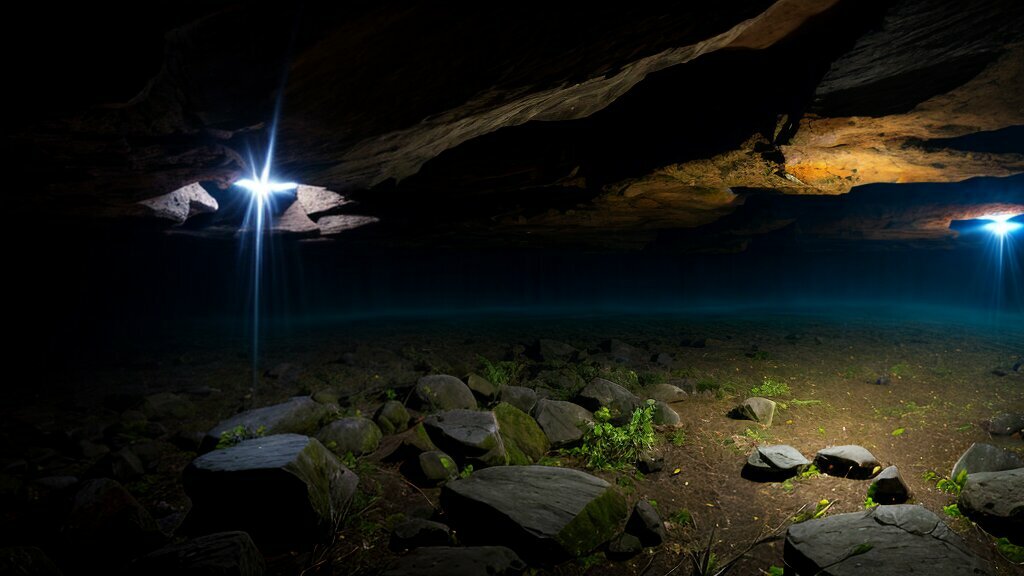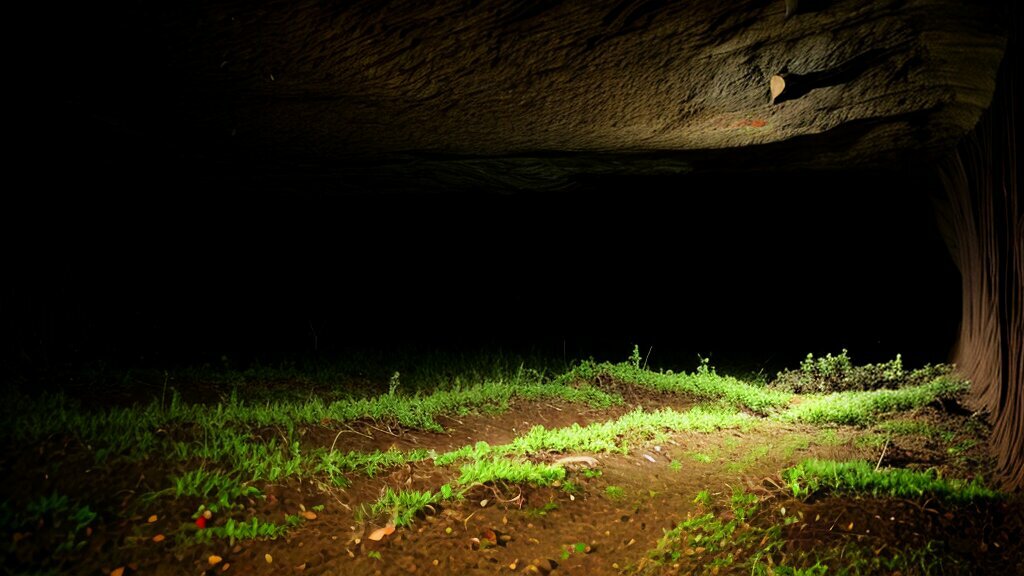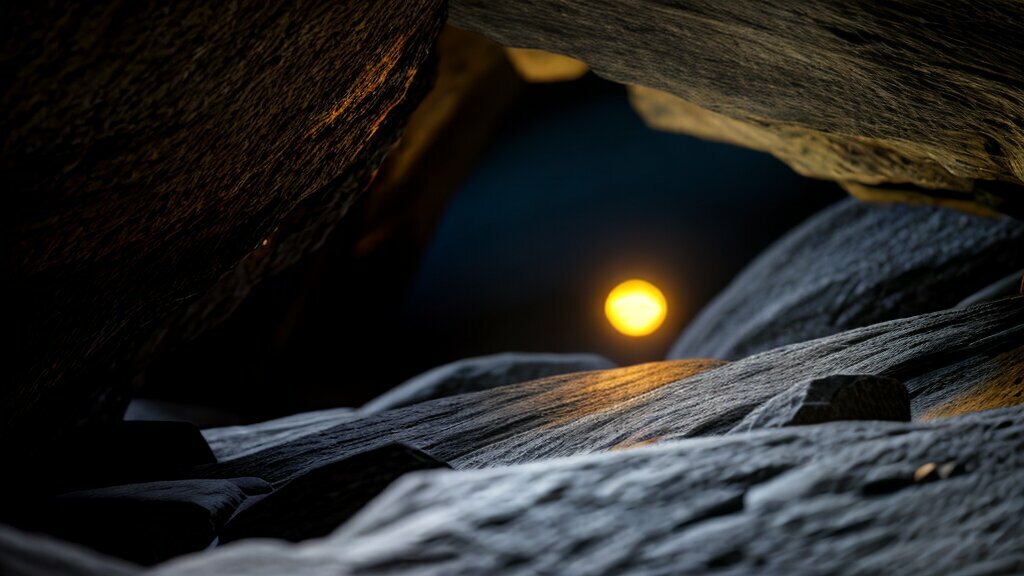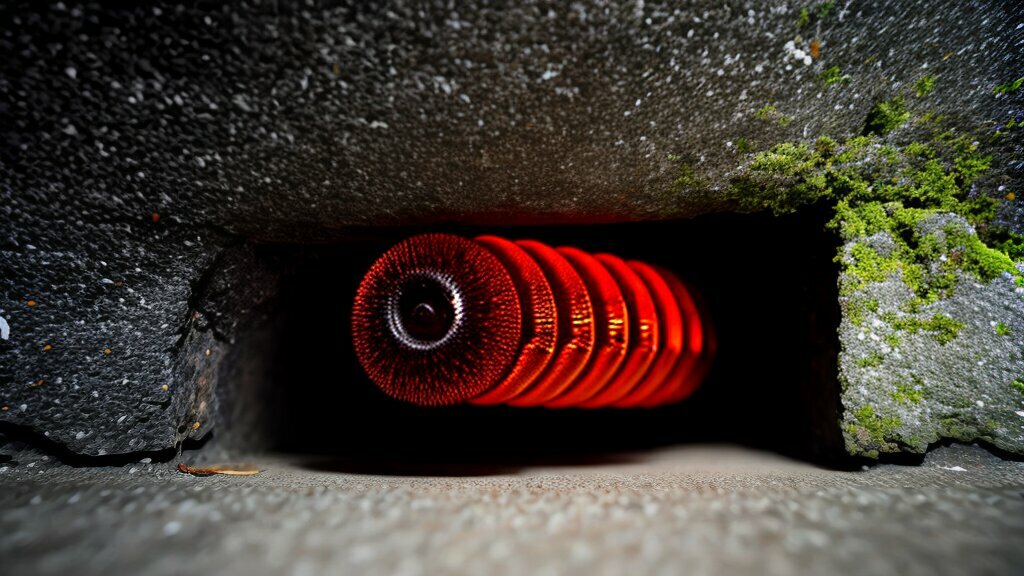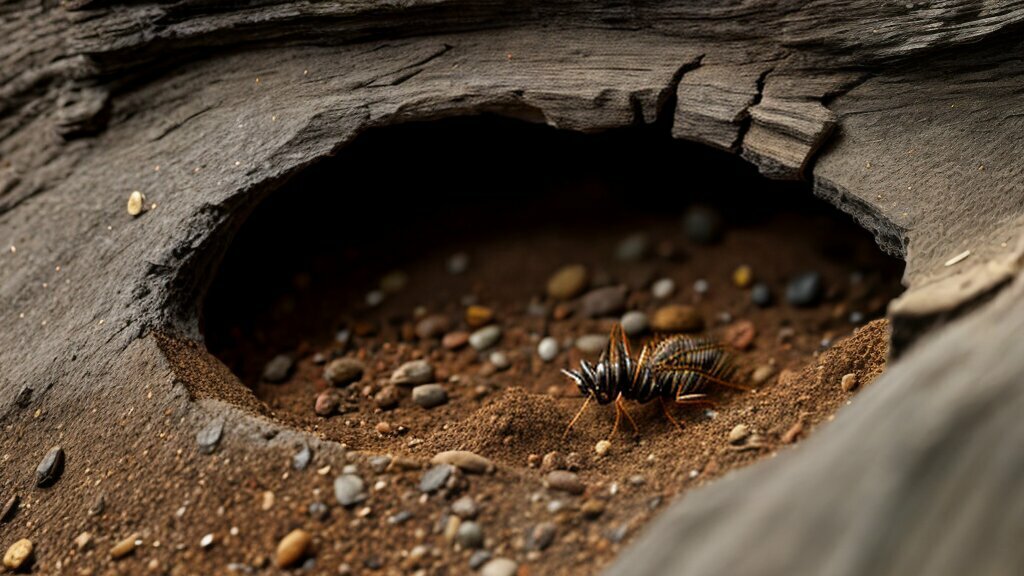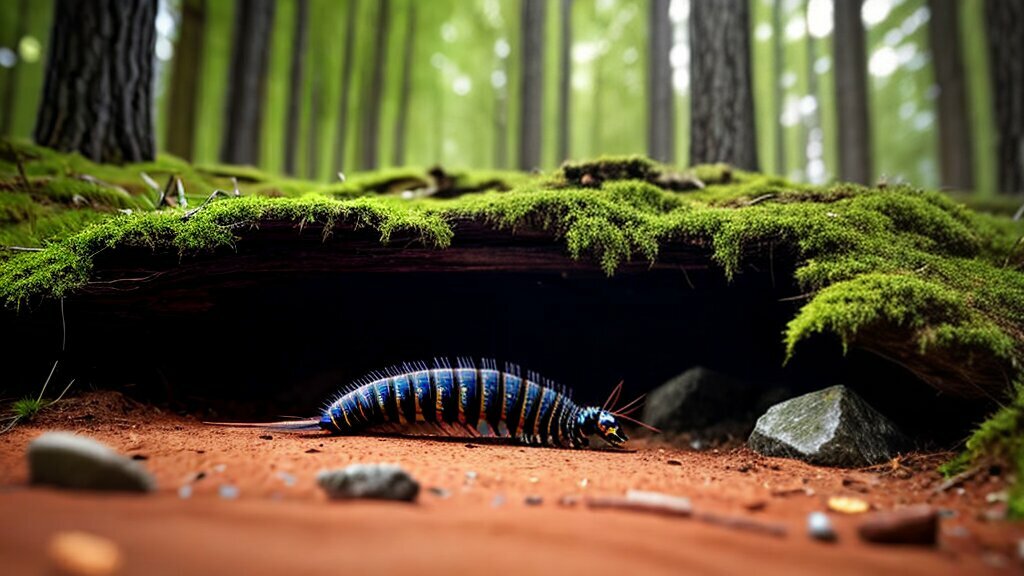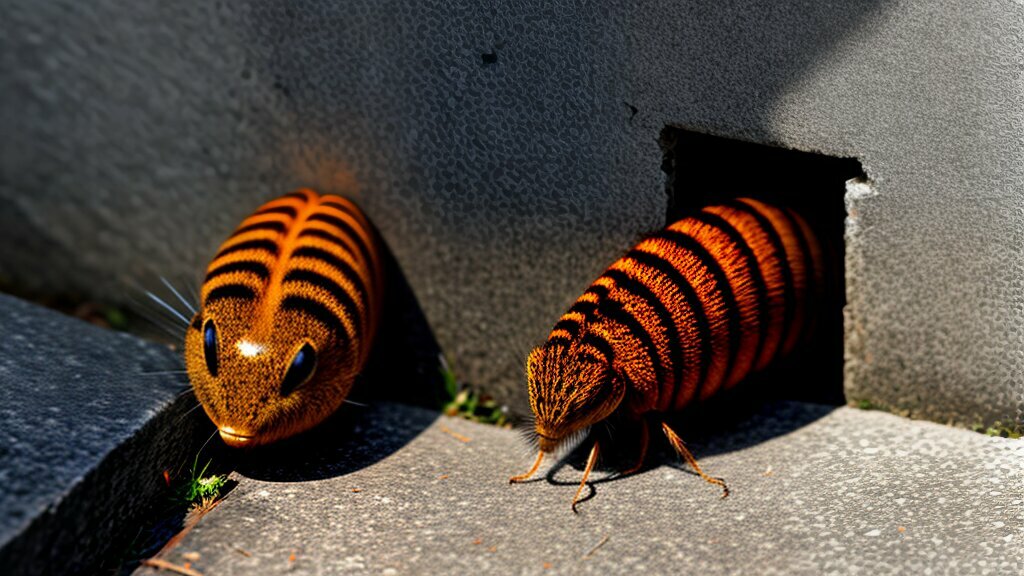Centipedes are fascinating creatures that have been around for over 400 million years. These arthropods are known for their long bodies and numerous legs, making them efficient predators of smaller insects and spiders. However, one question that often arises is whether centipedes have nests. In this article, we will explore the various habitats and hiding places where centipedes can be found, discuss their reproductive habits, and address the misconception of centipedes building nests.
Key Takeaways
- Centipedes do not build nests or colonies.
- Centipedes prefer damp and dark habitats, such as gardens, basements, and crawl spaces.
- They commonly hide in cracks in walls, under rocks, decaying logs, and leaf litter.
- Certain species of centipedes exhibit maternal behaviors and engage in parental care.
- Centipedes play an important ecological role as predators and in controlling pest populations.
Understanding Centipede Habitats
Centipedes are found in a variety of habitats, both indoors and outdoors. They tend to prefer moist, dark, and cool environments, which provide them with protection from predators and access to prey. Outdoors, centipedes can be found in gardens, under rocks, inside decaying logs and leaf litter, and in other secluded areas.
Indoors, centipedes tend to gravitate towards areas with high humidity levels, such as basements, bathrooms, and crawl spaces. They can also be found in wall voids or cracks, as well as on the floor near baseboards.
Centipedes have the ability to burrow into soil or other substrates, and some species are capable of digging complex networks of tunnels and chambers. This behavior allows them to create temporary hiding places and to access underground prey, such as earthworms and other soil-dwelling organisms.
In general, centipedes are well-adapted to a wide range of environments, and their habits vary depending on the species and the specific conditions of their habitat.
Understanding Centipede Habitats: Tips for Identifying and Addressing Infestations
“When dealing with a centipede infestation, it’s important to identify the source of the problem and to take appropriate measures to eliminate it. This may involve sealing up cracks and gaps in the home’s exterior, reducing moisture levels and removing potential food sources. In some cases, professional pest control may be necessary.”
If you suspect that your home or property may have a centipede infestation, there are a number of steps you can take to address the problem. First, it’s important to identify the source of the infestation, such as cracks in the foundation or areas with high humidity levels. Once you’ve pinpointed the source, you can take appropriate measures to eliminate it.
One common approach is to seal up all cracks and gaps in the home’s exterior, in order to prevent centipedes from entering in the first place. Additionally, reducing moisture levels and removing potential food sources, such as insects and spiders, can help to discourage centipedes from taking up residence in your home.
If these measures prove ineffective, you may need to consider professional pest control. Pest control experts have access to a range of tools and techniques that can help to eliminate centipede infestations, while minimizing the risk of harm to people and pets.
Do Centipedes Build Nests?
One of the common misconceptions about centipedes is that they build nests or colonies, similar to other insects like ants or termites. However, centipedes are predominantly solitary creatures and do not engage in cooperative behaviors like those seen in social insects.
Unlike other arthropods that construct elaborate nests or colonies, centipedes prefer to seek out existing hiding places. These can include cracks in walls, under rocks, decaying logs, and leaf litter. They have the ability to squeeze into narrow crevices and prefer to stay hidden during the day.
So, if you are wondering whether centipedes hide in nests, the answer is no. Instead, they utilize various natural hiding places, which can vary depending on the species and the environment in which they live.
Hiding Places for Centipedes
Centipedes are often found in dark, damp places where they can easily hide from predators. These creatures can be found in a variety of environments, both indoors and outdoors, and are known for their ability to squeeze into tight spaces.
Some common outdoor hiding places for centipedes include under rocks and decaying logs, as well as in leaf litter and other forms of ground cover. They may also burrow into the soil or seek refuge in cracks and crevices in walls or other structures.
Indoors, centipedes tend to prefer basements and crawl spaces where moisture levels are high. They may also be found in bathrooms, kitchens, and other rooms where water is frequently used.
Hiding Places for Centipedes:
| Type of Hiding Place | Description |
|---|---|
| Cracks and crevices in walls or other structures | Centipedes can squeeze into narrow spaces to stay hidden during the day. |
| Under rocks and decaying logs | Outdoor hiding places where centipedes may seek refuge. |
| Leaf litter and other ground cover | Outdoor hiding places where centipedes may burrow or hide. |
| Basements and crawl spaces | Indoor spaces where centipedes can find moisture and darkness. |
It’s important to note that centipedes can often be found in areas where other pests are present, as they prey on insects and spiders. If you’re dealing with an infestation of centipedes, it may be a sign that other pest populations are also high.
Centipede Reproduction and Eggs
Centipedes, like most arthropods, reproduce sexually. During mating season, males leave their burrows in search of females. Once a male locates a mate, he will deposit a packet of sperm, called a spermatophore, onto the ground. The female will then pick up the spermatophore and use it to fertilize her eggs.
Female centipedes typically lay their eggs in damp soil or other suitable locations, such as under rocks or decaying logs. The eggs are protected from the environment by a thin, membranous layer and can take anywhere from a few weeks to several months to hatch.
When the young centipedes emerge from their eggs, they are initially pale and have only a few pairs of legs. As they mature, they shed their exoskeletons and grow additional legs until they reach their full adult size.
Interestingly, some species of centipedes exhibit maternal behaviors. For example, some female centipedes may lay their eggs in a temporary burrow and then guard them until they hatch. Other species may protect their young from predators or even stay close to them after hatching to provide additional care.
Image source: https://seowriting.ai/32_6.png
Centipede Parental Care
Centipedes, like many other arthropods, have a unique approach to reproduction that involves laying eggs. However, some species of centipedes exhibit maternal behaviors that are quite rare in the animal kingdom. In these cases, female centipedes may guard their eggs or stay close to their offspring after hatching.
One example of maternal behavior in centipedes is found in the species Scolopendra subspinipes, which is native to Asia and the Pacific region. In this species, the female centipede constructs a nest made of soil that she carefully shapes with her legs. She then guards the eggs and the hatchlings, providing protection and food until they are self-sufficient.
This form of parental care is quite unusual in arthropods and demonstrates the unique characteristics of centipedes. While not all species exhibit this behavior, it is an important aspect of their biology and contributes to their success in various habitats.
The Role of Burrowing in Centipede Habits
As arthropods, centipedes exhibit diverse behaviors that enable them to survive in various ecological niches. One of these behaviors is burrowing, which serves as a protective mechanism and aids in finding prey.
Centipedes construct temporary burrows where they can retreat during unfavorable conditions or to avoid predators. Some species can dig complex networks of burrows in the soil or under rocks, enabling them to move around undetected.
Burrowing behavior also plays a role in thermoregulation, allowing centipedes to maintain their body temperature within a narrow range. By inhabiting burrows, centipedes can avoid extreme heat or cold, which can be detrimental to their survival.
The burrowing behavior of centipedes varies among species, with some preferring to remain near the surface, while others dig deeper into the soil. However, all centipedes share a common ability to dig and modify their environment to suit their needs.
Some centipedes also use their sharp mandibles to dig burrows in decaying wood or leaf litter. These burrows serve as shelters and also provide access to prey, such as insects and other arthropods.
In summary, the burrowing behavior of centipedes is a crucial adaptation that allows them to thrive in diverse habitats. By constructing temporary burrows and digging complex networks, centipedes can evade predators, find food, and maintain their body temperature. Their ability to modify their environment to suit their needs underscores their remarkable adaptability and resourcefulness.
Centipede Colonies: Fact or Fiction?
There is a common misconception that centipedes construct elaborate nests or colonies like some other arthropod species. However, this is not true. Centipedes are predominantly solitary creatures and do not form social groups or colonies.
“Centipedes are not social insects. They don’t live in a colony or a hive. They are solitary creatures that establish territories and defend them,” explains Dr. Robert Long, a biology professor at Cleveland State University.
Centipedes have a territorial nature and are not known for exhibiting cooperative behaviors. Instead, they prefer to seek out hiding places in existing crevices and burrows. This behavior may have evolved as a way to avoid competition for resources and reduce the risk of predation.
Despite their solitary nature, some species of centipedes engage in parental care, especially females that guard their eggs or stay close to the offspring after hatching.
The lack of colony formation in centipedes does not diminish their importance in their natural habitats. These arthropods play a vital role in controlling populations of pests like insects and spiders and contribute to nutrient cycling.
Next, we will explore the presence of centipedes in human dwellings and how to prevent their entry.
Centipedes and Human Dwellings
Centipedes can often be found in human dwellings, particularly in areas where there is moisture, such as bathrooms, basements, and crawl spaces. These areas provide the damp conditions and hiding places that centipedes prefer, making them an ideal habitat for these creatures.
Despite their presence in homes, centipedes do not actually build nests. Instead, they seek out existing hiding places such as cracks in walls, under rocks, and decaying logs. They are also known to enter homes through gaps in doors and windows, making it important to seal up any potential entry points.
If you suspect that there is a centipede infestation in your home, it’s important to take action to remove them. You can start by reducing moisture levels in your home and decluttering areas where centipedes may be hiding. Additionally, you can use sticky traps or contact professional pest control services to ensure a thorough removal.
It’s worth noting that while centipedes can be a nuisance in homes, they also play an important ecological role. As predators, they help to control populations of pests like insects and spiders, making them a beneficial presence in many outdoor environments.
By taking measures to keep centipedes out of your home, you can create a comfortable living environment while also encouraging their continued presence in natural habitats where they play a valuable role in pest management.
Environmental Impact of Centipedes
Centipedes play a vital role in their natural habitats, contributing to ecosystem health and balance. As predators, they help control populations of insects and other arthropods, thereby reducing the need for chemical pesticides. Their consumption of dead organic matter also aids in nutrient cycling, supporting the growth of plants and other organisms.
Despite their ecological importance, centipedes often receive negative attention due to their appearance and occasional presence in human dwellings. It is important to recognize their value as members of the natural community and to take steps towards coexisting peacefully with these fascinating creatures.
By understanding the specific habitat needs of centipedes and taking measures to prevent their entry into our homes, we can minimize conflict and promote a healthy environment for all species. It is also important to avoid the use of harmful insecticides that can cause unintended harm to centipedes and other beneficial arthropods. Ultimately, by recognizing the value of these often-overlooked creatures, we can improve our relationship with the natural world and contribute to a more sustainable future.
Conclusion
While centipedes don’t construct elaborate nests or colonies, they have specific habitat preferences and serve an important ecological role as predators that control populations of pests like insects and spiders. By understanding their habits and preferred environments, it’s possible to prevent infestations and coexist with these fascinating creatures.
FAQ
Q: Do centipedes have nests?
A: No, centipedes do not build nests like some other arthropod species. They prefer to seek out existing hiding places in cracks, under rocks, decaying logs, leaf litter, and other suitable locations.
Q: Where do centipedes live?
A: Centipedes can be found in a variety of habitats, including outdoor environments like gardens and natural areas, as well as indoor spaces such as basements and crawl spaces. They prefer damp and dark areas.
Q: Do centipedes hide in nests?
A: No, centipedes do not hide in nests. They rely on existing hiding places and do not construct elaborate nests or colonies like some other arthropod species.
Q: What are the hiding places for centipedes?
A: Centipedes commonly hide in cracks in walls, under rocks, decaying logs, and leaf litter. They have the ability to squeeze into narrow crevices and prefer to stay hidden during the day.
Q: How do centipedes reproduce and lay eggs?
A: Centipedes reproduce through mating rituals, and females lay their eggs in damp soil or other suitable locations. The eggs provide protection until they hatch.
Q: Do centipedes exhibit parental care?
A: Some species of centipedes exhibit maternal behaviors and engage in parental care. This can include guarding the eggs or staying close to the offspring after hatching.
Q: What is the role of burrowing in centipede habits?
A: Burrowing serves as a protective mechanism for centipedes and helps them find prey. Certain species can dig complex networks of temporary burrows.
Q: Do centipedes form colonies?
A: No, centipedes are predominantly solitary creatures and do not form social groups or colonies. They are territorial and lack cooperative behaviors.
Q: How do centipedes interact with human dwellings?
A: Centipedes can be found in human dwellings, attracted by moisture, food sources, and access points. Preventive measures can be taken to avoid centipede infestations and strategies for removal exist if needed.
Q: What is the environmental impact of centipedes?
A: Centipedes play an important ecological role as predators, controlling populations of pests like insects and spiders. They also contribute to nutrient cycling in their natural habitats.

